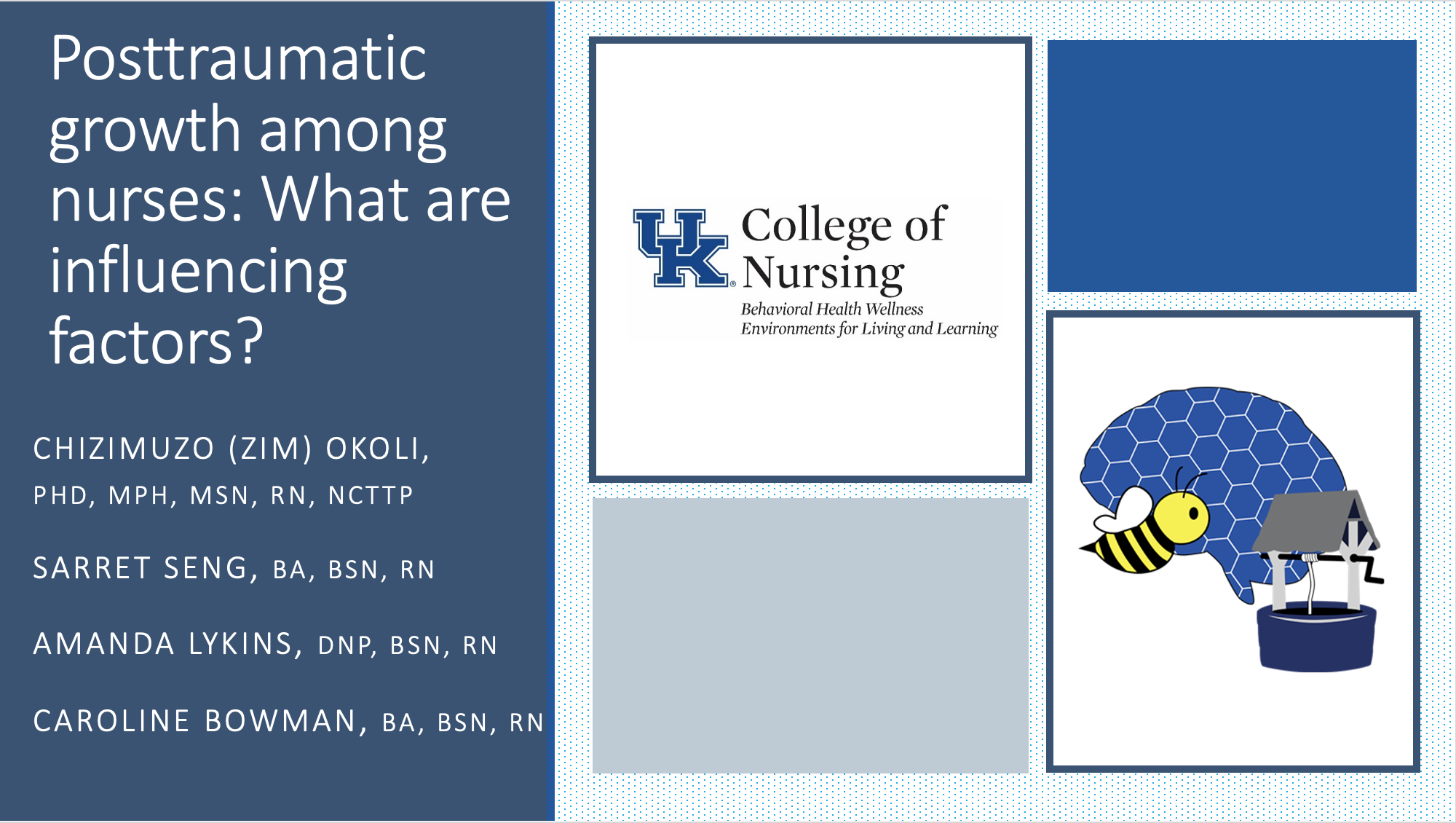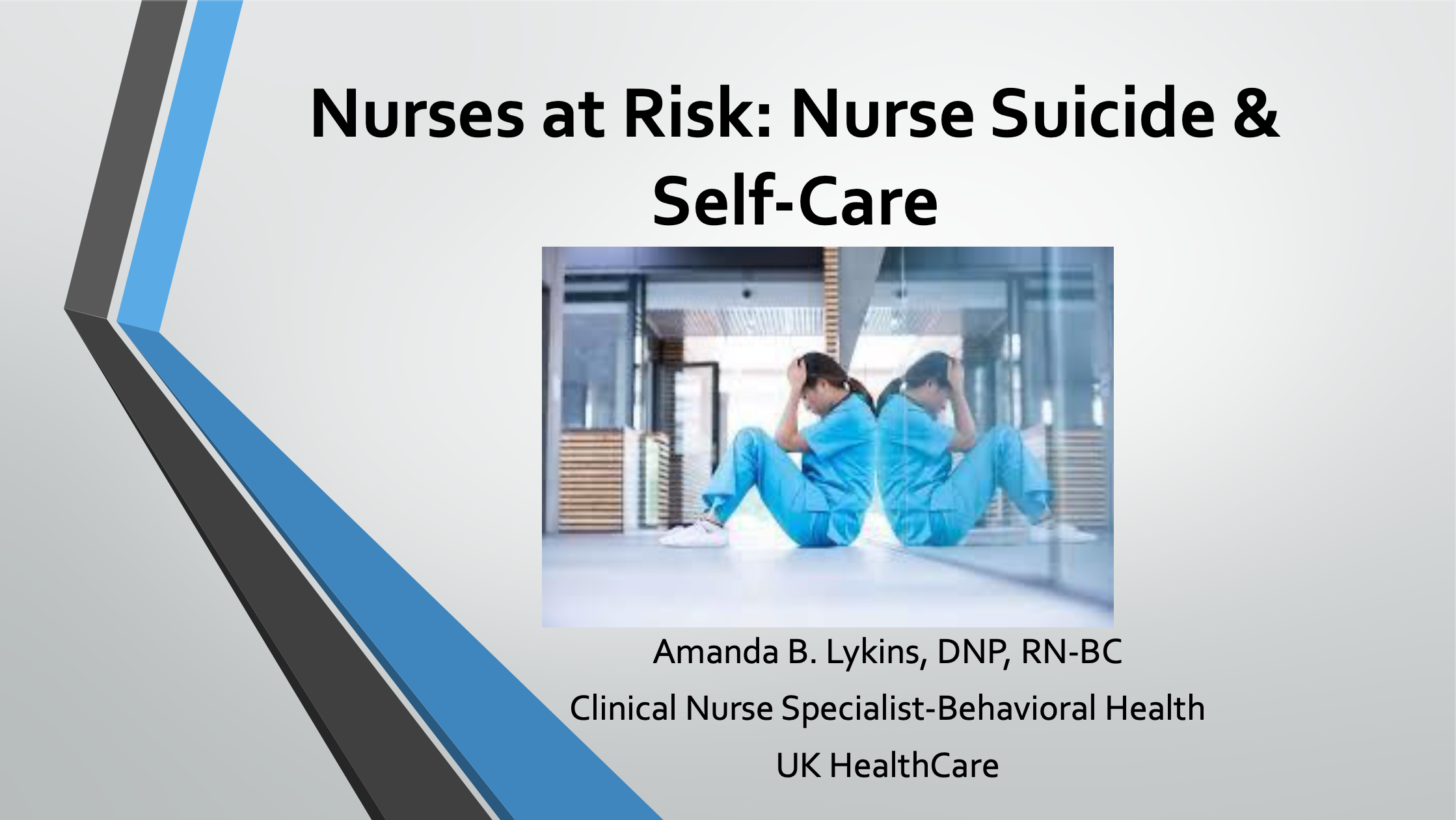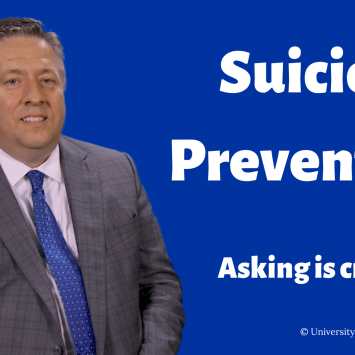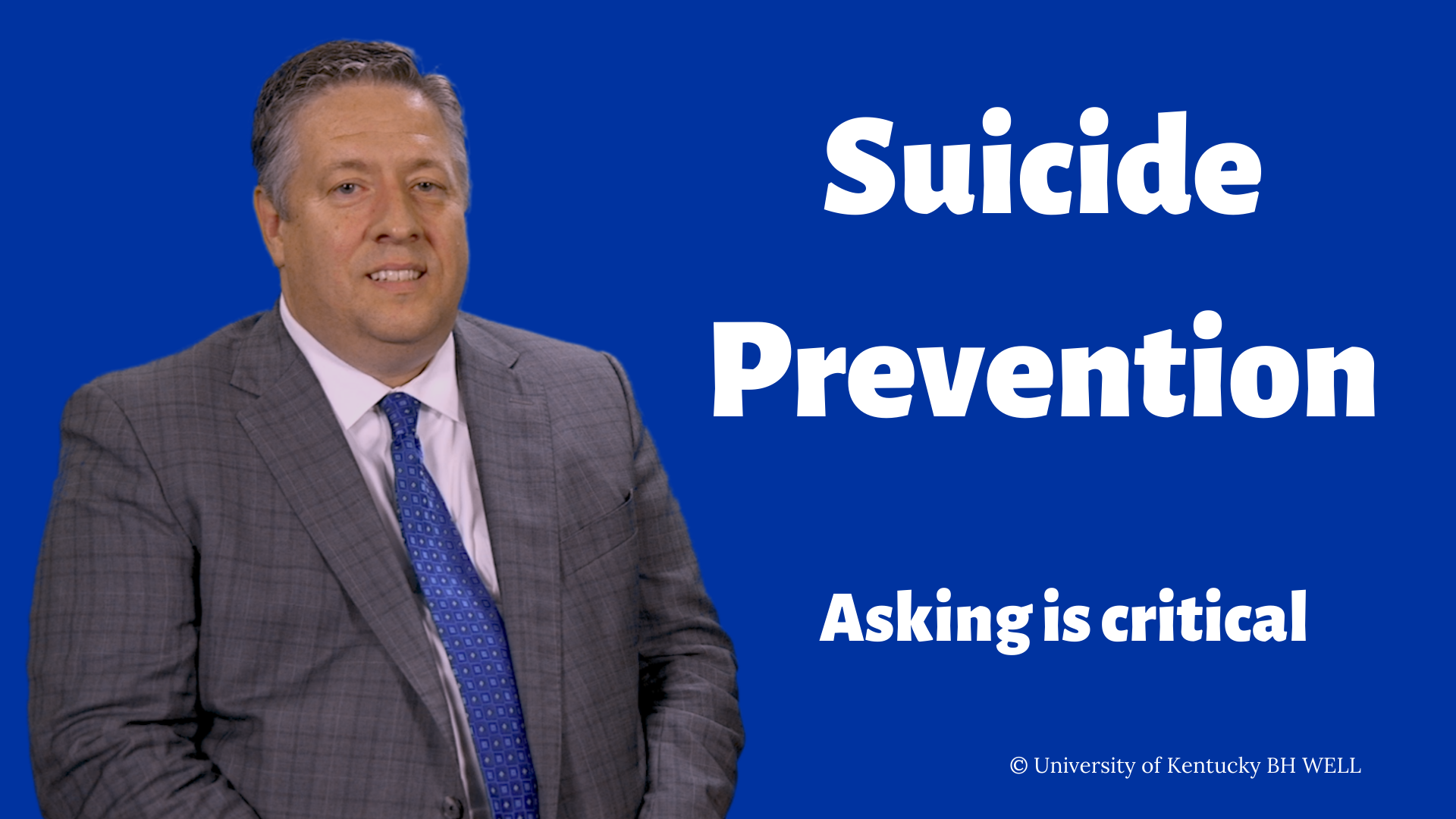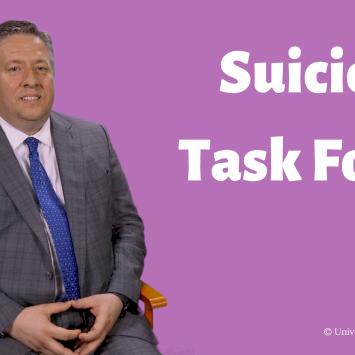Chloe: Welcome to the BH WELL video blog. I'm Chloe Robertson, your host. BH WELL stands for Behavioral Health Wellness Environments for Living and Learning. Today on the blog we have with us Marc Woods who is the assistant chief nurse executive for behavioral health at UK Healthcare. Hi Marc, thank you for joining us today.
Our first question for you is, why is it important to address suicide prevention?
Marc: Chloe we're in the midst of a national mental health crisis with regards to suicide. We know that suicide is the 10th leading cause of death for all adults. But for college students, that increases to the second leading cause of death. We know that a lot of this is because students typically in that age group don't take care of themselves the way that they could or should. They are also entering a stage of their life where they may be experiencing some drug experimentation, also first time in their lives they've been away from their family. So there are a lot of new social interactions that are put upon them, so they have a lot of stressors that we're not so sure that they're always prepared to be able to handle.
Chloe: Why is there so much stigma around suicide and prevention discussion?
Marc: So mental illness and behavioral health, for the most part, has quite a bit of stigma attached to it, It has always has. And suicide is no different. It doesn't mean that we shouldn't make efforts to try to combat that stigma but it's just one of those things that's attached to behavioral health and people aren't always sure how to handle someone they think may be suicidal. It's one thing to know that a person's behaviors have changed, or they may be experiencing sadness, or they may even voice certain things that kind of let you know that they're not doing so well. The average person may not feel comfortable with talking about suicide and asking about suicide.
Chloe: What are some risk factors for suicide and people with behavioral health challenges?
Marc: There's lots of different risk factors: previous suicide attempts, or having a history of behavioral health certainly puts someone at a higher risk for suicidal ideations or suicidal thoughts. We also know that certain groups of people experience suicidal ideation at much higher rates. We know that our LGBTQ community and our young males are actually at higher risk for higher rates of suicide.
Chloe: Could you talk a little bit about the Columbia Lighthouse Project and why UK Healthcare adopted this approach?
Marc: Absolutely. So one of the things that the literature tells us is that persons who actually commit suicide or have a successful suicide they, oftentimes about 50% of the time, have seen a health care provider within the last one to three months. Unfortunately that health care provider hasn't always been a behavioral health care provider. And so the concept is that those persons are oftentimes coming into contact with health care clinicians and so if we were to screen for suicide we may be able to treat someone. Maybe they didn't come there for suicidal ideations, maybe something else, but if we're screening for it we can kind of identify it and then connect that person to services. We chose the Columbia Suicide Severity Screen for a number of reasons; the main reason was that anybody can use it. It's widely accepted, lots of institutions use it and it's three to six very simple questions and after that it allows us to kind of triage the level of risk that patient is in from low to moderate to high and then give the appropriate level of interventions for the level of risk.
Chloe: That's a very important project. Can you talk some about how simply asking someone if they're contemplating suicide can make a difference?
Marc: It’s the most important part. So what we have to get comfortable with is saying the word suicide. Asking have you ever thought of killing yourself? If a person is interested in learning more about that and they're not a health care clinician they can go and look at the Columbia and literally just ask those three to six questions. We don't ask them simply because we might feel like the person is going to be at higher risk for committing suicide or maybe they weren't thinking about it before but now they are. That’s one of the fallacies that's just simply not true. Lots of studies have shown that we don't increase a persons’ suicidal ideations simply by having that conversation. It's the single most important thing that we can do for a loved one is to be able to have that comfort and that communication line where we can ask, “are you suicidal?,” “have you had thoughts of hurting herself?”
Chloe: Well thank you so much for sharing this important information with us today and thank you also for your time.
Marc: Absolutely.
If you're interested in learning more about BH WELL and the Behavioral Health Wellness Environments for Living and Learning, check out our website at https://www.uky.edu/bhwell/. Thanks for tuning into the BH WELL blog where behavioral health is our priority. See you next time.
Suicide Prevention Lifeline: 1-800-273-TALK
www.suicidepreventionlifeline.org

